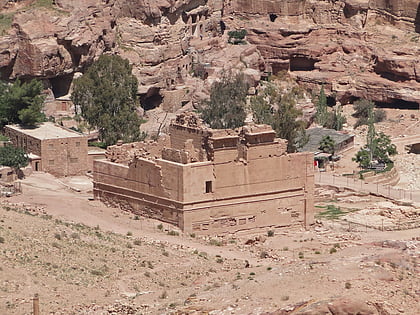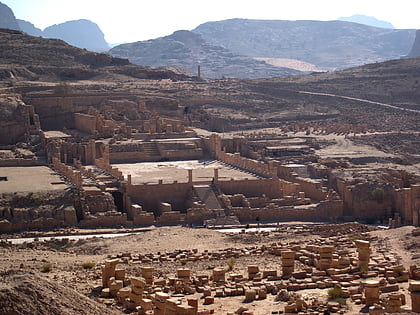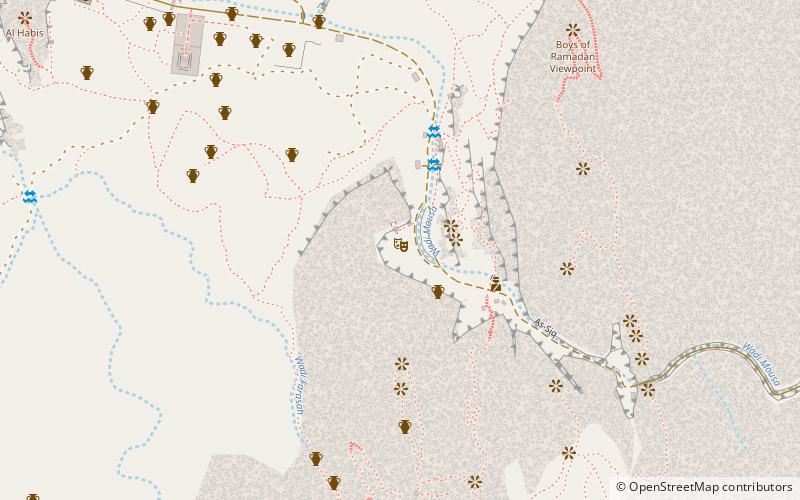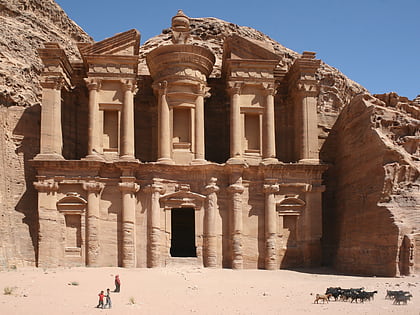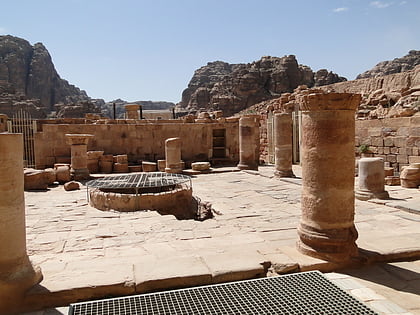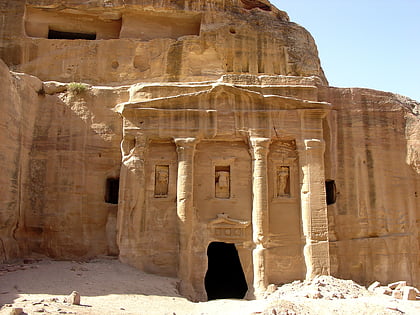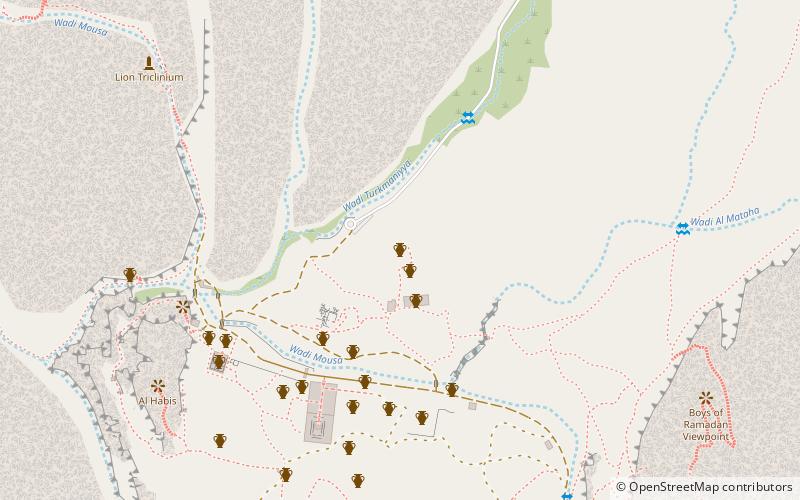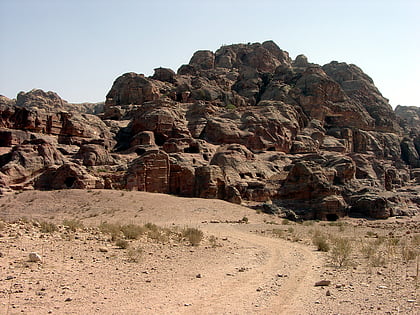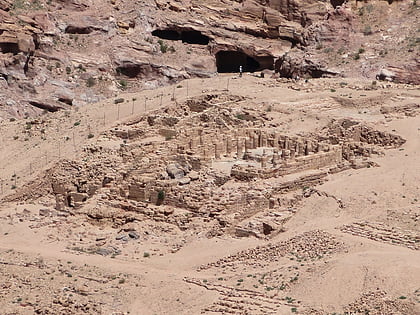Qasr al-Bint, Petra
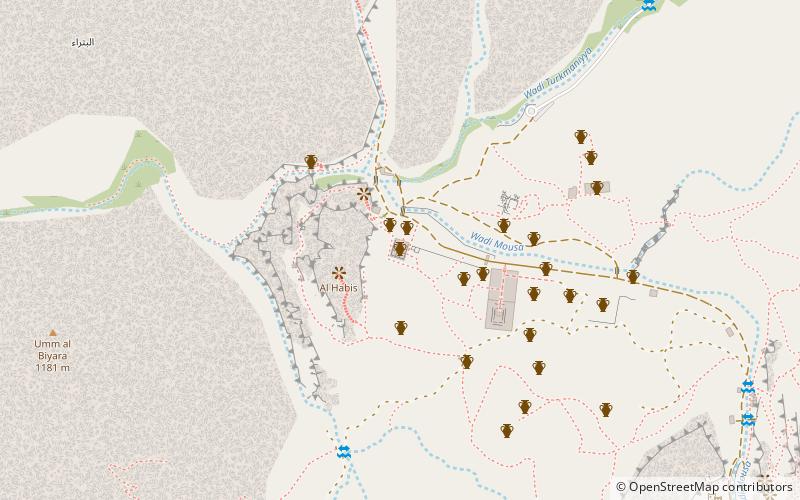

Facts and practical information
Qasr al-Bint, nestled in the heart of the ancient city of Petra in Jordan, stands as a testament to the architectural prowess of the Nabataeans. This monumental structure, believed to have been built in the 1st century CE, is one of the few freestanding buildings in Petra that has withstood the test of time.
Characterized by its grand façade and Hellenistic architectural features, Qasr al-Bint, which translates to "The Castle of the Daughter," is a historical landmark that draws the curiosity of many tourists. The temple is dedicated to the main Nabataean god, Dushara, and showcases the religious and cultural influences that shaped the region.
Visitors to Qasr al-Bint can marvel at the temple's towering columns and the remnants of its intricate carvings, giving a glimpse into the grandeur of the past. The temple's interior once housed a large cultic statue, and the walls were adorned with elaborate frescoes, though much of these have faded over the centuries.
The significance of Qasr al-Bint lies not only in its construction but also in its resilience; it has survived numerous earthquakes that have damaged other structures in Petra. Its enduring nature makes it a focal point for those interested in ancient engineering and preservation.
Qasr al-Bint is accessible to tourists as part of the broader exploration of Petra. Visitors can walk the historical paths of the Rose City to reach this majestic site. It's recommended to wear comfortable shoes and carry water, as the journey involves a fair amount of walking. For those looking to enhance their experience, hiring a local guide can provide valuable insights into the history and significance of this awe-inspiring temple.
Petra
Qasr al-Bint – popular in the area (distance from the attraction)
Nearby attractions include: Siq, Al-Khazneh, Great Temple, Petra Theater.
